The difference between big seal and small seal
1. What is the seal script?
Dazhuan is also known as Zhuanwen, Zhuanzhuan, Zhuanshu and Shishu. During the time of King Xuan of Zhou Dynasty, Taishi Zhen wrote fifteen chapters of "Dazhuan", because it was written by Zhen, so it is called "Zhenwen". "Zhou Wen" is written according to the ancient prose and sorted out on the basis of the ancient prose, so it may be the same as or different from the ancient prose. Today's scattered essays can be found in "Shuowen Jiezi" and various Zhongding Yi wares collected by later generations. Among them, the stone drum inscriptions written by King Xuan of Zhou are the most famous.

Stone drum text
Second, what is Xiaozhuan?
Xiaozhuan, also known as Qinzhuan, was created by Li Si, the prime minister of the Qin Dynasty. Qin Shihuang destroyed the six kingdoms and unified China. Its territory was vast and state affairs were many, and the documents became more and more complicated. I felt that the original characters were complicated and inconvenient to use. In addition, the original seven countries of Qin, Chu, Qi, Yan, Zhao, Wei, and Han were written in different languages. , written in different ways, also urgently need to be unified. Nai Mingchen's innovative style of writing. Therefore, Prime Minister Li Si wrote Cangjie Pian, Zhongchefu ordered Zhao Gao to write Yuanli Pian, and Tai Shi ordered Hu Wujing to write Bo Xue Pian, all of which were revised and simplified from the seal script. Xiaozhuan, also known as Yujinzhuan, is named after its strong and elegant writing.

Qin Taishan Stone Carvings
Compared with the big seal script, the shape and strokes of the small seal script are simplified, but the number of characters is increasing day by day, which is due to the requirements of the times. The transformation of characters from ancient script to big seal script and from big seal script to small seal script has epoch-making significance and occupies an important position in the history of Chinese writing.
Xiaozhuan is compared according to the characteristics of lines, and there are generally two types:
1. Jade tendon seal script: The seal script with plump strokes like jade tendon refers to "small seal script". Tendon, one for "hold", that is, chopsticks. The representative calligraphers of "jade tendon seal script" include Li Si from Qin Dynasty and Li Yangbing from Tang Dynasty.
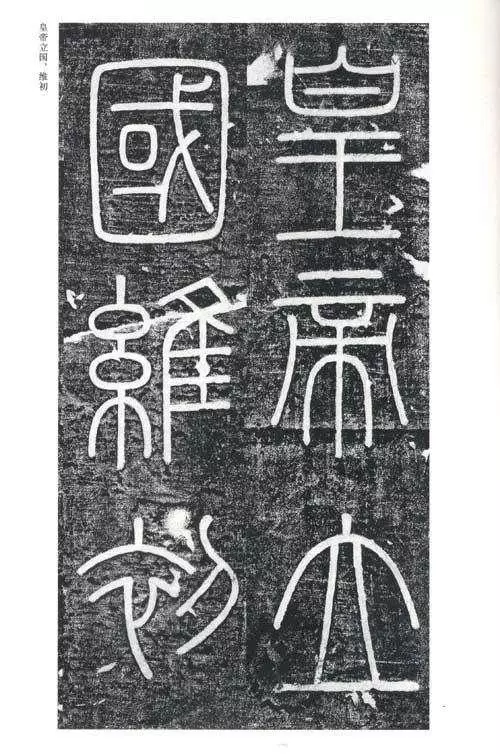
Qin Lisi "Yishan Monument"
2. Iron-line seal script: Small seal script with strokes as thin as lines and as strong as iron, such as Tang Li Yangbing's "Momentary Gua Stele". The name "iron thread" is said to be derived from "iron thread grass". Its petioles are slender and black, shiny, like iron.

Tang Li Yangbing "Three Graves"
3. According to the evolution of writing development, according to the dynasties, there are the following classifications:
1. Xia Zhuan: The characters of the Xia Dynasty in the legend. It is generally believed that the fifteen chapters of "Dazhuan" written by Zhou Xuanwang Taishizhen began with seal characters. Judging from the archaeological objects, no reliable Xia Dynasty inscriptions have been found; if there are any, they must be more primitive than oracle bone inscriptions. The ancients often said that the big seal script in bronze inscriptions was attached to the Xia seal script, and all these are based on false theories.
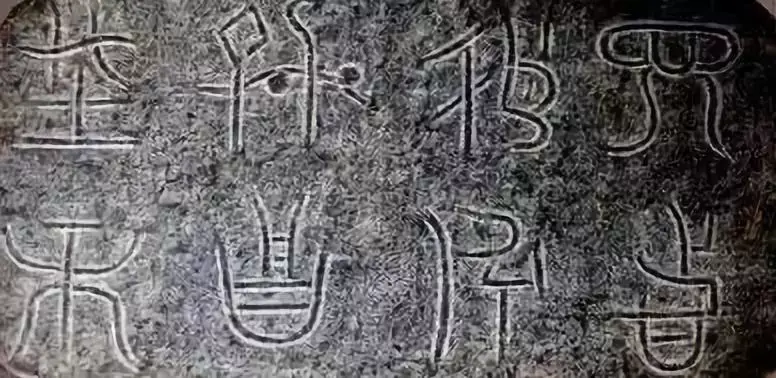
Xia dynasty script
2. Zhou Zhuan: The seal script of the Zhou Dynasty refers to the characters of the big seal system such as Zhongdingwen and Shiguwen. Because the small seal script is also called "Qin seal script", the big seal script is symmetrical to "Zhou seal script".
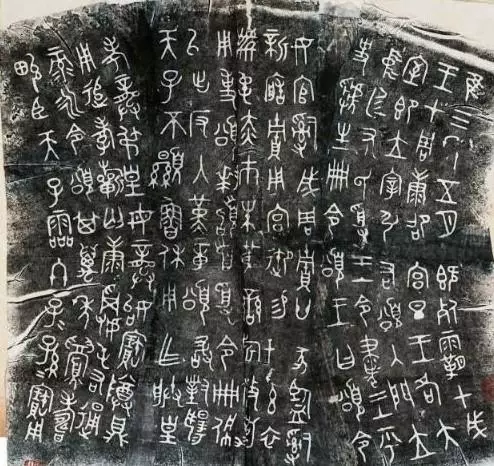
Zhou Dynasty Zhong Dingwen (Bronze Inscriptions)
3. Qin Zhuan: That is, "Xiaozhuan". "Small seal script" on the volume of Tang Zhang Huaiguan's "Book Break": "The case, the small seal script, was also written by Li Si, the prime minister of Qin Shihuang. The addition and loss of the big seal script are all the same as the script, so it is called 'Xiaozhuan', also known as 'Qin Zhuan'." Qing· Volume 5 of Liu Xizai's "General Introduction to the Arts", "General Books": "Qin seal script is simple, such as "Yishan", "Langya Terrace" and other steles? Represented by Li Si's books."
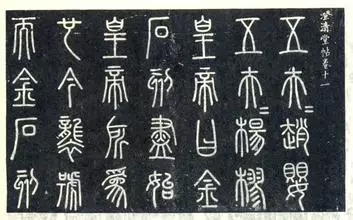
Qin "Langya Terrace"
4. Han seal script: The seal script of the Han Dynasty. Most of them are Xiaozhuan, but the body is close to the square, and the brushwork is close to Li. It is generally used on solemn occasions and goldware.

Eastern Han Dynasty "Yuan An Stele"
5. Tang Zhuan: The seal script written by calligraphers in the Tang Dynasty. There are many kinds of big and small seal characters, represented by Li Yangbing.
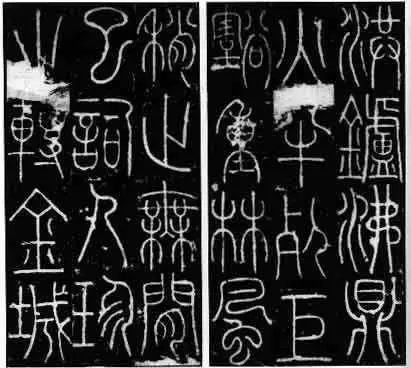
Tang Li Yangbing "Xuyun City Bi Temple Stele"
6. Qing seal script: In the Qing Dynasty, stele studies flourished, following the example of Qin and Han Dynasties, a bold reform was carried out on seal script writing, which changed the situation and decline of seal script after the Tang Dynasty due to the use of regular script in seal script. Fengqi, Deng Shiru, Wu Rangzhi, Yang Yisun, Zhao Zhiqian and others are all masters of seal script.

Deng Shiru, Qing Dynasty, "Bai's Thatched Cottage Collection"
Articles are uploaded by users and are for non-commercial browsing only. Posted by: Lomu, please indicate the source: https://www.daogebangong.com/en/articles/detail/Calligraphy%20class%20the%20difference%20between%20big%20seal%20script%20and%20small%20seal%20script.html

 支付宝扫一扫
支付宝扫一扫 
评论列表(196条)
测试